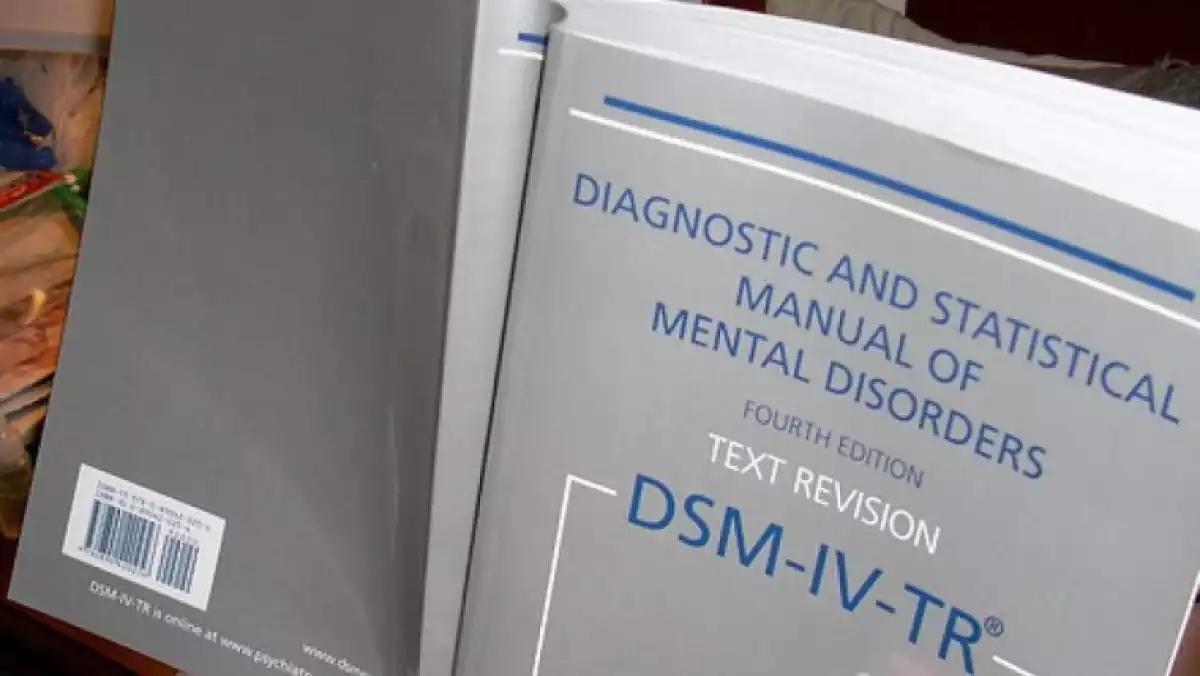
The fourth edition of the Diagnostic and Statistical Manual of Mental Disorders (DSM-IV) is the most widely used guide in the world to classify psychiatric disorders. Its primary function is to categorize psychiatric pathologies for proper diagnosis, which helps to orient treatment in a clear way.
In this article, we talk about what DSM-IV is and who uses it. Besides we break down the organization of this manual, its main classification system and how it defines mental disorders.
What is DSM-IV?
The DSM-IV constitutes the fourth edition of the Diagnostic and Statistical Manual of Mental Disorders (DSM) created by the American Psychiatry Association also known as the APA.
This is a classification system for psychiatric disorders, and its goal is to diagnose, study, and treat these if possible. Also, it's a tool that's also used to carry out statistical studies on public mental health.
The main goal of the DSM-IV is to provide a useful universal guide for all clinical professionals. The experts that use this manual are usually:
clinical psychologists, researchers, psychiatrists, social workers, nurses, occupational therapists, counselors, and many others that are members of health-related disciplines.
The creation of the manual
The version of DSM-IV created in 1994 is actually a revision of the prior version of the DSM -DSM-III. Its empirical creation process was carried out based on a three-tier analysis.
1. Psychiatric literature revisions
In these revisions, the most pertinent topics to analyze for each diagnosis were identified, and the most relevant information related to each mental disorder was gathered.
2. Re-analysis of data
When the revision of the literature indicated that there was a lack of statistical analysis on specific researched topics, they went back to analyze this data.
3. Field studies
Individuals representing different sociocultural and ethnic groups were selected to generalize the findings. Information was uncovered on the trustworthiness of each criterion for each psychiatric disorder.
Mental disorder definition
According to DSM-IV (2000), a mental disorder is a syndrome or behavioral pattern of clinical significance, that appears associated with discomfort or disability.
Besides, this syndrome shouldn't merely be a culturally accepted response to a particular event (for example, the death of a loved one).
A mistake that society continues to make is the belief that the classification of psychiatric disorders also classifies people and not just the disorders that these people happen to have.

How is DSM-IV organized?
The manual is organized first with the instructions for use, the classification of the disorders (a list of codes and categories), the description of the multi-axial system that DSM-IV operates with and the diagnostic criteria for each disorder along with a description and information on each one.
Multi-axial system
This system refers to the five axes that belong to different areas of information that can help the clinician to determine treatment and predict the results of this.
The use of the axes facilitates complete evaluation of pathologies that the patient shows signs of. The five categories in this classification include:
Axis I (clinical disorders)
Axis II (personality disorders and intellectual disabilities)
Axis III (medical conditions)
Axis IV (psychosocial and environmental factors)
Axis V (global assessment of functioning)
Diagnostic codes
In DSM-IV, most disorders correspond with specific codes. Besides, in Europe, there is also an International Classification of Diseases (ICD-10)
This coding system is used to gather medical information and ease process of collecting data and communicating diagnoses with governmental institutions, insurance companies, and even the World Health Organization (WHO).
Here is an example of a DSM-IV code:
- F32.0 Major Depressive Disorder, Single Episode, Mild [296.21]
Type of information included
The DSM IV adds a description of each mental disorder including different categories for each one of them. Below, we describe the rubric for most of the disorders in the manual:
The diagnostic characteristics
The subtypes and/or specifications
The classification procedure
The symptoms and associated disorders
The symptoms possibly linked to culture, age, and gender
The prevalence or epidemiology of the disorder on a global scale
The progression or evolution
Family patterns
The differential diagnosis

Mental disorder classification
DSM IV disorders fall into 16 major diagnostic classes (like substance-related disorders, mood disorders, or anxiety) and an additional section called "other conditions that could be a focus of clinical attention."
The 16 diagnostic classes
Disorders of childhood and adolescence
Delirium, dementia, and amnestic and other cognitive disorders
Mental disorders due to a medical condition, not classified in other sections
Substance-related disorders
Schizophrenia and other psychotic disorders
Mood disorders
Anxiety disorders
Somatoform disorders
Factitious disorders
Dissociative disorders
Sexual and gender identity disorders
Eating disorders
Sleep disorders
Impulse-control disorders not classified in other sections
Adjustment disorders
Personality disorders
References
American Psychiatry Association. DSM History. Retrieved January 25, 2019, from https://www.psychiatry.org/psychiatrists/practice/dsm/history-of-the-dsm
